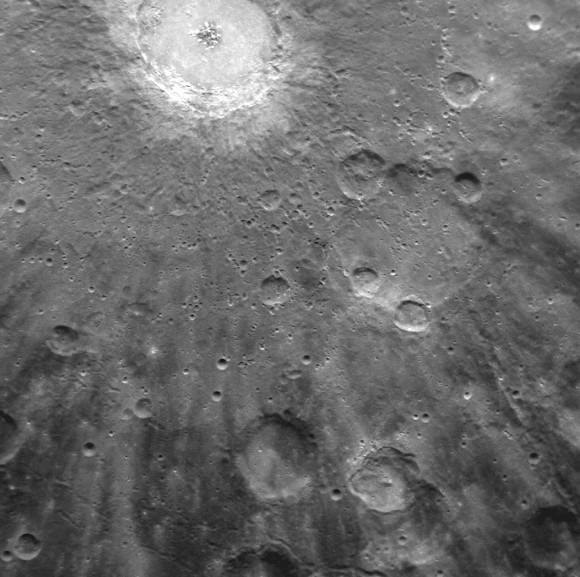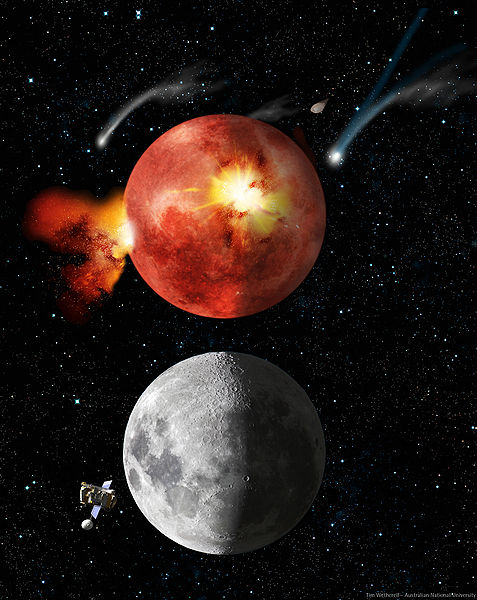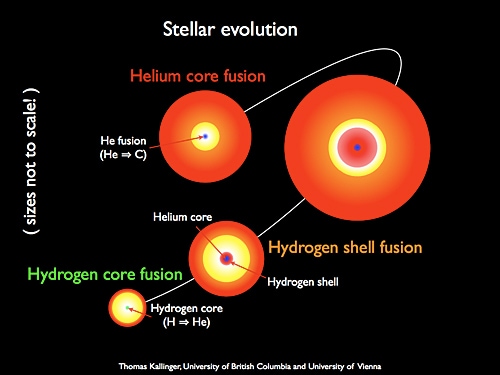http://en.wikipedia.org/wiki/Late_Heavy_Bombardment wrote:
<<
The Late Heavy Bombardment (commonly referred to as the lunar cataclysm, or LHB) is a period of time approximately 4.1 to 3.8 billion years ago (Ga) during which a large number of impact craters are believed to have formed on the Moon, and by inference on Earth, Mercury, Venus, and Mars as well. The evidence for this event comes primarily from the dating of lunar samples, which indicates that most impact melt rocks formed in this rather narrow interval of time. While many hypotheses have been put forth to explain a "spike" in the flux of either asteroidal or cometary materials to the inner solar system, no consensus yet exists as to its cause. The Nice model popular among planetary scientists postulates that the gas giant planets migrated in orbit at this time, causing objects in the asteroid belt and/or Kuiper belt to be put onto eccentric orbits that reached the terrestrial planets. Nevertheless, some argue that the lunar sample data do not require a cataclysmic cratering event near 3.9 Ga, and that the apparent clustering of impact melt ages near this time is an artifact of sampling material affected by a single large impact basin.
The main piece of evidence for a lunar cataclysm comes from the radiometric ages of impact melt rocks that were collected during the Apollo missions. The majority of these impact melts are believed to have formed during the collision of asteroids or comets tens of kilometers across, forming impact craters hundreds of kilometers in diameter. The Apollo 15, 16, and 17 landing sites were chosen as a result of their proximity to the Imbrium, Nectaris, and Serenitatis basins.
Under study on Earth, the ages of impact melts collected at these sites clustered between about 3.8 and 4.1 Ga. The apparent clustering of ages of these was first noticed in the mid-1970s by Fouad Tera, Dimitri Papanastassiou, and Gerald Wasserburg who postulated that the ages record an intense bombardment of the Moon. They called it the "lunar cataclysm" and proposed that it represented a dramatic increase in the rate of bombardment of the Moon around 3.9 Ga. If these impact melts were derived from these three basins, then not only did these three prominent impact basins form within a short interval of time, but so did many others based on stratigraphic grounds. At the time, the conclusion was considered controversial [but] as more data has become available, particularly from lunar meteorites, this theory, while still controversial, has gained in popularity. The lunar meteorites are believed to randomly sample the lunar surface, and at least some of these should have originated from regions far from the Apollo landing sites. Many of the feldspathic lunar meteorites probably originated from the lunar far side, and impact melts within these have recently been dated. Consistent with the cataclysm hypothesis, none of their ages was found to be older than about 3.9 Ga. Nevertheless, the ages do not "cluster" at this date, but span between 2.5 and 3.9 Ga.
Studies of the highland crater size distributions suggest that the same family of projectiles struck Mercury and the Moon during late heavy bombardment. If the history of decay of late heavy bombardment on Mercury also followed the history of late heavy bombardment on the Moon, the youngest large basin discovered, Caloris, is comparable in age to the youngest large lunar basins, Orientale and Imbrium, and all of the plains units are older than 3 billion years.
Prior to the introduction of the Late Heavy Bombardment theory, it was generally assumed that the Earth had remained molten until about 3.8 Ga. This date could be found in all of the oldest known rocks from around the world, and appeared to represent a strong "cutoff point" beyond which older rocks could not be found. These dates remained fairly constant even across various dating methods, including the system considered the most accurate and least affected by environment, uranium-lead dating of zircons. As no older rocks could be found, it was generally assumed that the Earth had remained molten until this point in time, which defined the boundary between the earlier Hadean and later Archean eons.
Older rocks could be found, however, in the form of chips off asteroids that fall to Earth as meteorites. Like the rocks on Earth, asteroids also show a strong cutoff point, at about 4.6 Ga, which is assumed to be the time when the first solids formed in the protoplanetary disk around the then-young Sun. The Hadean, then, was the period of time between the formation of these early rocks in space, and the eventual solidification of the Earth's crust, some 700 million years later. This time would include the accretion of the planets from the disk and its slow cooling into a solid as the gravitational potential energy of this collapse was released. Later calculations showed that the rate of collapse and cooling was dependent on the size of the body, and applying this to an Earth-sized mass suggested this should have happened quite quickly, as quickly as 100 million years. The difference between measurement and theory was something of a mystery at the time.
The Late Heavy Bombardment is now offered as an explanation of this oddity. Under this model, the rocks dating to 3.8 Ga represent those that were solidifying after much of the crust was destroyed by the Bombardment. The Acasta Gneiss in the North American cratonic shield and gneisses within the Jack Hills portion of the Narryer Gneiss Terrane in Western Australia are, collectively, the oldest continental fragments on Earth and do not predate the late heavy bombardment. The oldest mineral yet dated on Earth, a zircon from Jack Hills, predates this event but may simply be a fragment of crust left over from this event, contained within a much younger (~3800 Ma old) rock. Some geologists believe they have found 4.28 billion year old rock in Quebec, Canada, though.
This has led to something of a revolution in the understanding of the earliest stages of Earth's history during the Hadean. Older references generally show the Hadean Earth having a molten surface with prominent volcanos, for instance Hadean time. The name referred to the "hellish" conditions assumed on Earth for the time. It is now believed that the Hadean surface was solid, temperate, and water covered (albeit acidic). This is due to the presence of several particular isotopic ratios which suggest water-based chemistry took place at some point prior to the formation of the oldest rocks.
Of particular interest, Manfred Schidlowski argued in 1979 that the carbon isotopic ratios of some sedimentary rocks found in Greenland were a relic of organic matter. There was much debate over the precise dating of the rocks, with Schidlowski suggesting they were about 3800 Ma old, and others suggesting a more "modest" 3600 Ma. In either case it was a very short time for abiogenesis to have taken place, and if Schidlowski was correct, arguably too short a time. The Late Heavy Bombardment and the "re-melting" of the crust that it suggests provides a timeline under which this would be possible; life either formed immediately after the Late Heavy Bombardment, or more likely survived it, having arisen earlier during the Hadean. Recent studies suggest that the rocks Schidlowski found are indeed from the older end of the possible age range at about 3850 Ma, suggesting the latter possibility is the most likely answer.>>
 MESSENGER at Mercury
MESSENGER at Mercury




